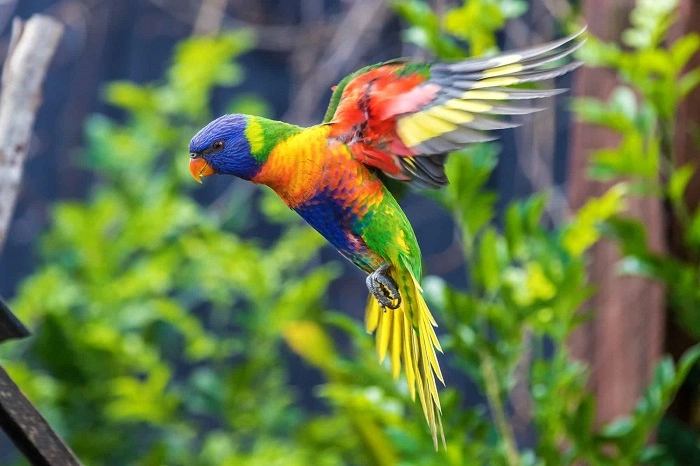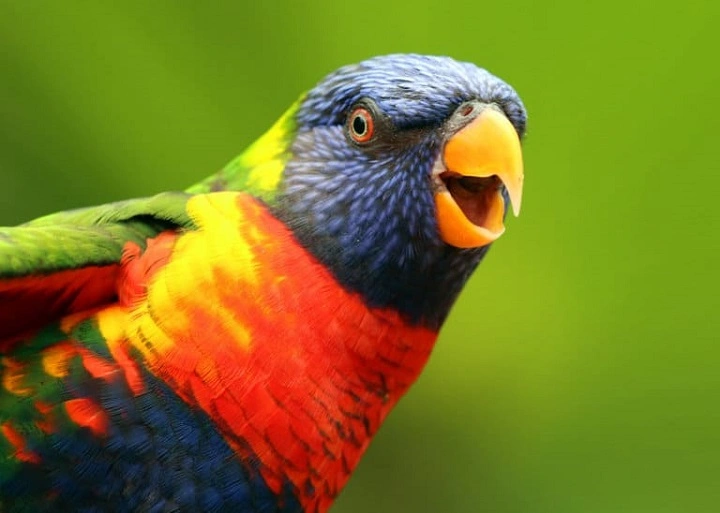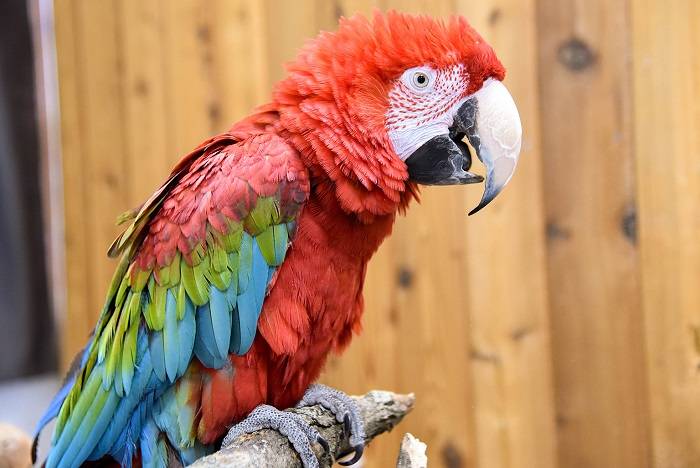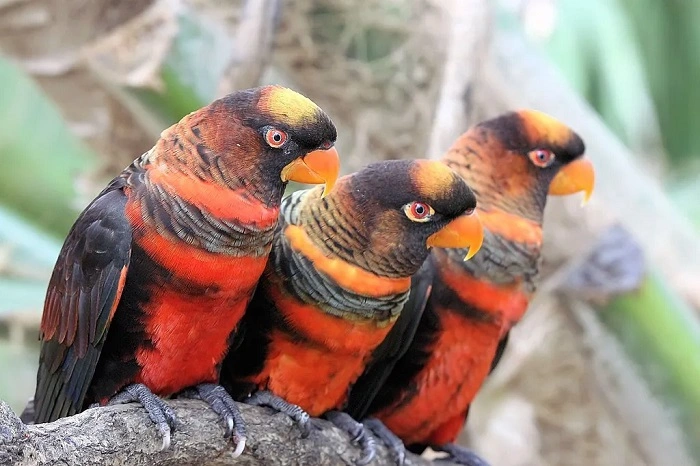Birds are one of the most colorful creatures on Earth, showcasing a vibrant array of hues, patterns, and designs that never cease to captivate the imagination. From the rich blues of tropical parrots to the radiant reds of cardinals, the diversity in bird colors is a testament to nature’s incredible ability to create beauty. The colors we see in birds are not just for decoration—they play important roles in communication, mating, and survival. In this blog post, we’ll explore the fascinating world of colorful birds, the reasons behind their vibrant plumage, and some of the most strikingly colorful bird species.
Why Are Birds So Colorful?
Mating and Attraction

Colorful feathers are often a signal to potential mates. In many bird species, vibrant colors and elaborate plumage are indicators of health, strength, and genetic fitness. For instance, the brighter and more intricate the feathers, the more likely it is that the bird has access to good nutrition, a safe habitat, and superior genes.
Male birds, in particular, tend to be more colorful than females. They use their striking colors in courtship displays to attract mates. The peacock, with its showy tail feathers, is one of the most famous examples of this behavior, where males fan out their colorful plumage to impress females.
Species Identification and Communication
Colorful feathers can also help birds identify each other. In species that live in large colonies or flocks, vibrant colors allow birds to distinguish between individuals. This is especially important for species that rely on group dynamics, like parrots and penguins. In some cases, color variations may also communicate social status, dominance, or territory ownership.
Camouflage and Survival
While bright colors are often associated with attraction, some birds use their feathers for camouflage. Birds with muted tones or intricate patterns blend into their surroundings to avoid predators. For example, ground-nesting birds like the American woodcock have cryptic, earthy-colored plumage that helps them stay hidden from predators. In contrast, birds in dense rainforests, such as the harpy eagle, may use their dark and mottled colors to blend in with the shadowy canopy.
Protection from UV Rays
In some birds, their colorful feathers may also serve a protective function. Bright colors, especially in species living in direct sunlight, can help shield birds from harmful UV rays. The European starling, for example, has iridescent feathers that can reflect sunlight and regulate body temperature.
Examples of Stunningly Colorful Birds
Macaws
Macaws are some of the most strikingly colorful birds in the world, known for their vivid feathers in shades of blue, yellow, and red. These large parrots are native to Central and South America, where they live in tropical rainforests. The Scarlet Macaw is particularly famous for its fiery red and yellow plumage, while the Blue-and-Gold Macaw boasts a rich combination of bright blue feathers and golden yellow highlights.
- Colors: Red, blue, green, yellow.
- Habitat: Tropical forests of Central and South America.
- Interesting Fact: Macaws use their colorful feathers as a display during mating rituals and as a sign of strength.
Peacock
The peacock is perhaps the most iconic of all colorful birds. The male peacock’s iridescent tail feathers, which are fanned out during courtship displays, feature an array of blues, greens, and golds, all with a distinctive “eye” pattern. This elaborate display is one of the most impressive examples of nature’s artistry.
- Colors: Blue, green, gold, and bronze.
- Habitat: Native to South Asia, but now found in many parts of the world.
- Interesting Fact: Peacocks use their bright plumage to attract females, and their fanned tail is a sign of their health and vitality.
Hummingbirds
Hummingbirds are small, yet they are among the most colorful birds in the world, especially due to their iridescent feathers that shimmer in the light. These birds, known for their ability to hover in place, come in a wide range of colors including vibrant greens, reds, blues, and purples. The Ruby-throated Hummingbird is one of the most well-known species, with its fiery red throat and green body.
- Colors: Red, green, blue, purple, gold.
- Habitat: Found primarily in the Americas, particularly in tropical regions.
- Interesting Fact: Hummingbirds’ iridescent feathers are due to microscopic platelets in the feathers that reflect and refract light.
Mandarin Duck
The Mandarin Duck is one of the most colorful waterfowl species. Native to East Asia, the male Mandarin Duck features vibrant plumage with a mix of bright orange, purple, white, and blue, creating a stunning display. The bright colors help distinguish the males from the more muted-colored females, who are less brightly colored to provide camouflage during nesting.
- Colors: Orange, purple, green, blue, white.
- Habitat: East Asia, especially China and Japan.
- Interesting Fact: The male Mandarin Duck’s colorful feathers are used to attract mates during the breeding season.
Golden Pheasant
The Golden Pheasant is another bird known for its extraordinary coloration. The male golden pheasant has a vivid yellow body, red and orange plumage, and a distinctive golden crest. These colors are not only beautiful but also serve to attract females during the mating season.
- Colors: Red, yellow, orange, gold.
- Habitat: Native to China, but also found in parts of Europe and North America.
- Interesting Fact: Golden pheasants are often kept as ornamental birds due to their striking appearance.
Scarlet Ibis
The Scarlet Ibis is a striking bird native to South America and the Caribbean. As its name suggests, this bird is known for its bright red plumage, which is due to the carotenoid pigments in its diet of crustaceans and other marine life. The vivid red feathers make it stand out against the lush green landscapes of its habitat.
- Colors: Red, pink.
- Habitat: Wetlands, marshes, and coastal areas of South America and the Caribbean.
- Interesting Fact: The bright red color of the Scarlet Ibis is a result of the food it eats, particularly crustaceans.
The Science Behind Colorful Plumage
Pigments and Coloration
Birds’ colors come from a combination of pigments in their feathers and the structural properties of their feathers. Pigments like melanin provide blacks, browns, and earthy tones, while carotenoids produce yellows, oranges, and reds. These pigments are often acquired through the bird’s diet. For example, the Scarlet Ibis and Flamingo get their red coloration from the carotenoids found in the algae and crustaceans they eat.
Structural Colors
In addition to pigments, some birds have what are known as structural colors. This occurs when the microscopic structure of the feathers reflects and refracts light in a way that creates bright, iridescent colors. Hummingbirds, for example, owe their brilliant blues, greens, and purples to the microscopic structure of their feathers, not just pigments.
Purpose of Coloration
Bright colors in birds serve a variety of functions, from attracting mates to signaling health and dominance. Birds like the peacock use their colorful feathers in courtship rituals to impress females. In some species, the brightness of the feathers indicates genetic fitness, which is crucial for mate selection.
Seasonal Changes in Coloration
Some birds change the color of their feathers with the seasons. Male birds may molt into more colorful plumage during the breeding season to attract mates, only to wear duller feathers during the non-breeding months. This is particularly common in species like ducks and finches.
Birds’ colorful plumage is one of the most captivating features of the avian world. The stunning variety of colors—from the vibrant reds and oranges of macaws to the iridescent greens and blues of hummingbirds—showcases the incredible diversity and beauty of nature. Whether it’s for mating, social signaling, or survival, the colors of birds serve important purposes that go beyond aesthetics. The next time you spot a colorful bird, take a moment to appreciate the intricate details and the evolutionary wonders behind its vibrant feathers.




